Having an exercise routine for your brain, as well as your body, can lead to you becoming exceptional at what you do and gain greater recognition. Most of us turn to physical exercise when we want to feel better, and our brains are still left frazzled. If we spent half as much time as we do caring for our physiques or appearance, and instead on exercising our brains – we would surely be unstoppable, as we continue to challenge ourselves and develop in our careers.
According to Forbes, creative thinking is fundamental to successfully futureproofing your career – amidst ongoing talk of artificial intelligence and machine learning. All it means for most professionals is the ability to be able to come up with something new, and in PR’s fast paced environment this is a crucial tool to stay ahead of the curve and deliver fast, effective results. However, tapping into your creative side often takes a fresh mindset and the digital environment we now inhabit is training us out of concentration and into distraction. This is bad for our mind, work and ultimately, the world and is where the important concept of deep work comes in.
Deep work
Coined by Cal Newport, deep work is “Professional activity performed in a state of distraction-free concentration that pushes your cognitive capabilities to their limit. These efforts create new value, improve your skill, and are hard to replicate.”
Newport also stresses the importance of ‘down time’, suggesting that regular resting of your brain improves the quality of your ‘deep work’. There’s a lot of power in the ‘pause’, and if you can apply this during the day you will find an effective development in your approach to problem solving.
Quite simply, it is a method put in place to focus on getting a large amount of productive work done, in a set amount of time, without distractions. Although it sounds simple, in PR and similar creative industries, distractions come thick and fast, and before you know it you can fall into some bad habits, where you are working a lot harder and for longer than you need to.
If you need some convincing, let Bills Gates’ use of deep work during his ‘think weeks’ inspire you. During these ‘think weeks’ he takes twice a year, Gates spends two weeks alone at his cottage reading and thinking about the future of Microsoft.
Let’s give it a go
To gain some personable insight into the effectiveness of this concept, and dissolve any scepticism I previously had, I put it to the test. Using Newport’s guide to the ‘deep work’ concept, I pieced together a routine that suited and tracked my progress. Here was my approach and the results.
Brain Exercise: Approach:
- Philosophy chosen: Journalistic (see other options within Newport’s book); focuses on fitting the practice into your schedule wherever you can – a good choice for people who are on the move with little regularity to their days.
- At work rules: If I had a professional problem that I was stuck on, I’d stick my notifications on silent and go for a quick walk. This would allow me to unplug from all technology and – like meditation – if I found my head wandering, I’d notice it and bring it back to the task.
- If I was writing copy, I would stick my headphones in, pop on some beatstrumentals music, and set a timer for 30 minutes. A bonus of this is a visual sign to my colleagues that I am focussing. After this time, I would pause, review and either add more time on or move onto the next scheduled task.
- At home: I would dedicate to turning my tech off between 9-10pm and charge my phone outside my room. This in turn encourages a not-so-tired 25-year-old to get creative or pick up a book.
This technique and approach did not come naturally. I was working against an ingrained habit to check emails and notifications that came through during these ‘deep work’ sessions, and it wasn’t always appropriate in my role to focus on one task. For example, responding to journalists who need a quick response. I found the ‘at home’ rules a lot easier than the ‘at work’, as I felt I had more control when I unplugged and read – I also found I was falling asleep a lot earlier than usual. I felt as if the targeted focus at work allowed me to pick up on mistakes and brainstorm problems a lot quicker than before, and even though I didn’t get chance for a walk, instead I made time to break from my digital devices. This quick tech freedom allowed for reflection that led to wonderful bursts of ideas. A useful tip was ensuring I had noted my deep work intervals into my diary as a reminder to continue what felt unnatural at times.
Moving forward, I think that when time allows, this technique it is an exceptional tool to get work ticked off your to-do lists, especially when feeling ‘stuck’ or overwhelmed with larger tasks. It takes practise and is something I am looking forward to incorporating full time into my routine. If you enjoy or like the idea of this method, make sure you give John Berger’s ‘Ways of Seeing’ a read, it has a multitude of techniques to encourage creativity to get those meatier problems solved efficiently.
Final word
People have a strong perception that advances in technology allow us to get so much more done, however there is no evidence of it and statistics actually show a ‘productivity slow down’. Our tech inventions are not saving us time or helping with big break throughs, they are encouraging busyness and not productivity. After all, we are all aware of tech’s uglier side. So, why not try applying an exercise routine for your brain? Maybe you already have and have something to share? Go crazy in the comments or share this article with a frazzled colleague (no shade).





